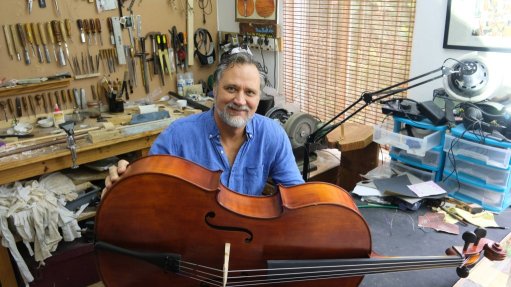Four reasons why nuclear is dead beat
I attended a recent Academy of Science of South Africa (Assaf) conference on nuclear power in Pretoria. It brought to the fore the mountain of justification – moral, financial and technical – the nuclear build programme has to climb for it to gain a foothold in our energy mix.
For those who were pronuclear, the event proved to be a very frustrating and desperate occasion. Be that as it may, here are four reasons why nuclear is a long way from being concluded in South Africa, despite the noise from the Department of Energy and its proponents.
Firstly, as a former US President used to say on the campaign trail, “It’s the economy, stupid!” The economy is unlikely to grow at a rate of 5.4% of gross domestic product (GDP), as the National Development Plan (NDP) envisages, nor at 7% to 8%, as Finance Minister Pravin Gordhan hopes. This is certainly not going to be the case in the next five years.
Like other emerging economies, our eco- nomy floats when the economic engines of larger economies are on full throttle. Even an Asia-centric tilt will not change things, in light of the fact that China’s economy is on a slowdown, and it looks like the recession will bite for much longer in the US and Europe.
If the pull economies do not prosper, our exports will diminish and so too will the flow of hot money to our shores, after the US Federal Reserve embarked on tapering. You only have to look at Brazil. Two years or so ago, the South American country was experiencing growth rates of as high as 7% of GDP, but this has slowed to around 2%.
There is also uncertainty about South Africa’s economic growth rate, which is currently at a much lower level than what the Integrated Resource Plan (IRP) first envisaged. As a result, the entire premise of the original demand projections made by the IRP is called into question. If growth and demand projections are out of sync, then so will be the need for additional generation capacity. The issue of demand projections constitutes the biggest conundrum for the nuclear industry, as lower demand does not justify 9 000 MW of nuclear, let alone a single unit, because there are other competing technologies that can fill the gap – even smaller coal plants.
Secondly, the original overnight costs that were used to make some conclusions on the levelised cost of electricity for nuclear power are not realistic, as nuclear build costs have gone up – to double the original cost estimates. Besides overnight costs, do not take into account finance costs and cost overruns, both planned and unplanned, that are routine for nuclear plants. This is clearly the case now for the Finnish and Belgian nuclear plants that are being built.
Historical cost overruns can be anywhere between 50% and 200%.
It was pointed out at the Assaf meeting that you do not know the true costs of nuclear plants until there is a contract on the table and the thing is built. And, as we know, once you build a plant, it is hard to pull out, especially for bulk infrastructure. There is also another good reason why nuclear costs have gone up – Fukushima. The Japanese nuclear disaster, which is still ongoing, has put a damper on popular support for nuclear and it has inadvertently pushed up the compliance costs as a result of new regulatory rules and standards.
Thirdly, nuclear discount rates tend to be far too generous. Proponents tend to put numbers that favour their own preferred outcomes. Discount rates require some scrutiny, as they are wholly based on what assumptions one makes regarding the finance costs, compared with the economic benefits, even if a power technology’s capital cost is initially high. There is often also confusion around the use of discount rates. You have to distinguish between financing costs from wider economic and social welfare benefits.
A financial discount rate, which describes the aver- age weighted cost of capital for a nuclear plant, is very different from an economic discount, which describes the economic and social welfare return, or cost that can be incurred as a result of locking oneself in a long-term infrastructure project. Proponents tend to undercost decommissioning and long-term nuclear waste disposal because this becomes largely a public problem rather than a private cost. Vendors tend to focus on plant costs – for all other costs, they tend to ensure these are socialised by public coffers. Hence, their economic discount rates tend to be low, as they have already shifted the costs into the long future and discounted all the benefits to the immediate future.
Fourthly, confidence in long-term investments must also be a sure technology bet. We do not have the foresight for what can come in the future. Technology revolutions, especially disruptive technologies, can catch us by surprise. As the famous Rumsfeld dictum notes, it is the difference between a known unknown and an unknown unknown. In the case of the first, you probably can do something about it and in the second you simply cannot prepare, as you do not know it is coming.
One area that nuclear pundits do need to watch is the emergence of disruptive modular technologies that allow for better responsiveness to demand and giving users greater autonomy and access to self-power.
The evolution of these technologies is hard to predict. It really depends on what technology breakthroughs and innovations happen with smart grids, renewables (including fuel cells) and storage technologies. What we do know with current nuclear technologies is that they are bulky and costly, and we can be unhappily stuck with them for a very long time.
Article Enquiry
Email Article
Save Article
Feedback
To advertise email advertising@creamermedia.co.za or click here
Comments
Press Office
Announcements
What's On
Subscribe to improve your user experience...
Option 1 (equivalent of R125 a month):
Receive a weekly copy of Creamer Media's Engineering News & Mining Weekly magazine
(print copy for those in South Africa and e-magazine for those outside of South Africa)
Receive daily email newsletters
Access to full search results
Access archive of magazine back copies
Access to Projects in Progress
Access to ONE Research Report of your choice in PDF format
Option 2 (equivalent of R375 a month):
All benefits from Option 1
PLUS
Access to Creamer Media's Research Channel Africa for ALL Research Reports, in PDF format, on various industrial and mining sectors
including Electricity; Water; Energy Transition; Hydrogen; Roads, Rail and Ports; Coal; Gold; Platinum; Battery Metals; etc.
Already a subscriber?
Forgotten your password?
Receive weekly copy of Creamer Media's Engineering News & Mining Weekly magazine (print copy for those in South Africa and e-magazine for those outside of South Africa)
➕
Recieve daily email newsletters
➕
Access to full search results
➕
Access archive of magazine back copies
➕
Access to Projects in Progress
➕
Access to ONE Research Report of your choice in PDF format
RESEARCH CHANNEL AFRICA
R4500 (equivalent of R375 a month)
SUBSCRIBEAll benefits from Option 1
➕
Access to Creamer Media's Research Channel Africa for ALL Research Reports on various industrial and mining sectors, in PDF format, including on:
Electricity
➕
Water
➕
Energy Transition
➕
Hydrogen
➕
Roads, Rail and Ports
➕
Coal
➕
Gold
➕
Platinum
➕
Battery Metals
➕
etc.
Receive all benefits from Option 1 or Option 2 delivered to numerous people at your company
➕
Multiple User names and Passwords for simultaneous log-ins
➕
Intranet integration access to all in your organisation


















